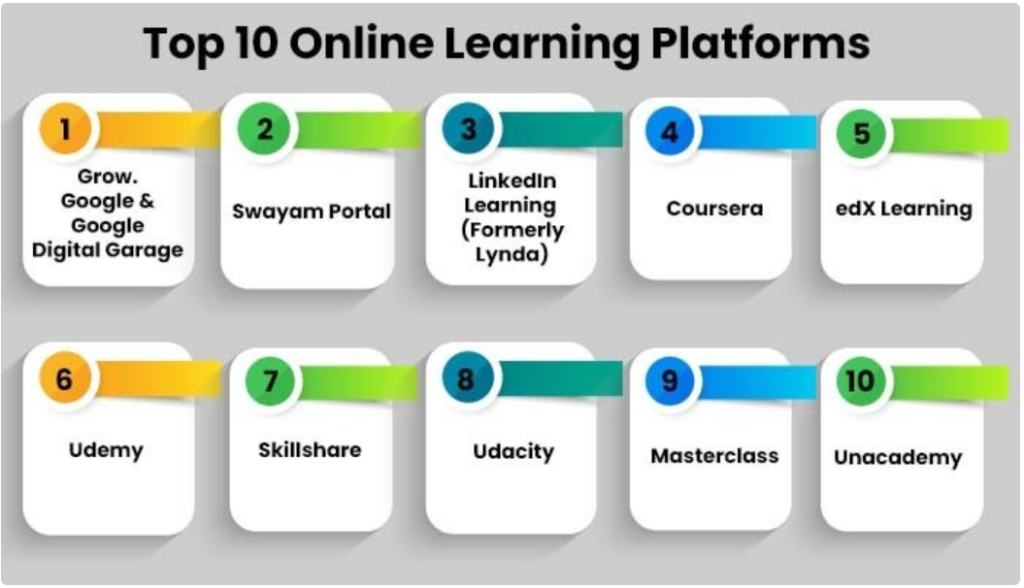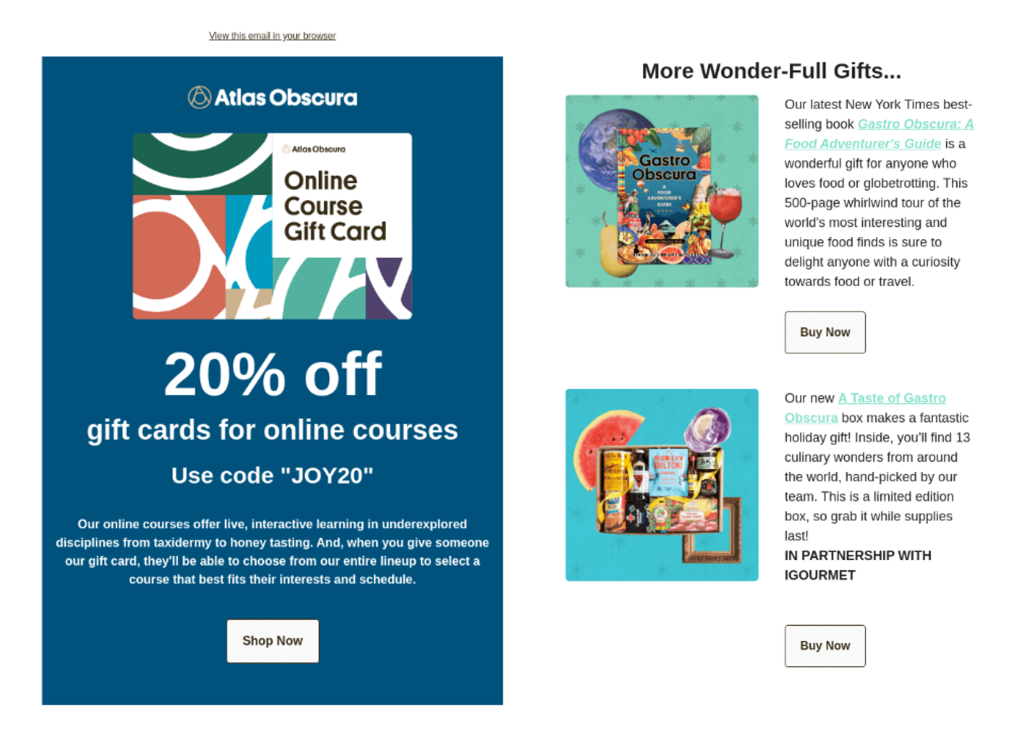- Home
- Email Templates
- How to Sell Online Courses wit ...

It seems more than appropriate to state that since the turn of the 21st century, the methods by which educational content is shared, consumed, and promoted have undergone a fundamental transformation. With the steady evolution of digital tools, online education marketing strategies have become increasingly diverse—stretching across social media platforms, search engines, content hubs, influencer collaborations, and beyond. Within this wide spectrum, each channel is important and serves a primary purpose. When the goal is to build relationships and stimulate interest toward your program (which ultimately leads to sales), email marketing consistently stands out.
In this article, we will explore all the advantages email marketing provides for online education and look closely into online education marketing strategies that lead to sales.
How to Market an Online Course
To understand how to market an online course, one must first recognize that visibility does not equal engagement. While tweets and Instagram reels can introduce a course to new audiences, they rarely create the kind of trust or depth needed to convert a hesitant browser into an invested student. That is a case where email can be a much better tool—not for promotion, but for establishing a direct communication channel that can educate, persuade, and build relationships.
Successful marketing for online courses requires two things: a narrative and a well-timed series of nudges. Email allows creators to craft sequences that guide potential students from learners’ curiosity to commitment. Unlike social media feeds that shift with algorithms, an inbox remains a stable ground where educators can control the message. If you have this approach in mind, then online course marketing becomes a tool with which you can create both visibility and meaningful interaction.

How to Promote an Online Course via Email: Step-by-Step Guide
1. Build a list of potential students
To test your email strategy, you need an audience, preferably the one that’s genuinely interested in the subject you teach. That’s why the first and perhaps most strategic step in the online course selling process is building a list. The most effective way to do it is to offer a lead magnet that aligns with your course topic. No matter which lead magnet you decide to go for, it should provide immediate value and serve as a logical teaser for your full course.
Once the lead magnet is created, the next task is to drive traffic to the signup page. This is the right moment to apply online education marketing strategies. You can opt for a blog optimized for search or start running targeted social media ads or host a free introductory webinar. The goal of each strategy is to guide qualified visitors toward your email list.
Example of online courses email campaign from Teachable

2. Design a pre-launch sequence
Many creators who are wondering how to promote online courses often make one common mistake—they jump straight into sales.
Nonetheless, when it comes to marketing for online courses, you have to establish your reputation and earn trust first. A well-designed pre-launch email sequence is your chance to shift subscribers from “just readers” to motivated learners. This sequence, typically spread over five to seven days, should not mention your course directly at first. Instead, it should focus on building anticipation, providing insights, and establishing your authority on the topic.
A sample 7-day pre-launch sequence might look like this:
- Day one: Welcome email—thank users for subscribing and set expectations.
- Day two: Share your story or reason for creating the course.
- Day three: Identify a common struggle your audience faces.
- Day four: Offer a quick tip, technique, or free resource.
- Day five: Provide social proof or testimonials from your previous work.
- Day six: Hint at something exciting coming soon.
- Day seven: Official announcement of the course + preview of what’s inside.
When you stick to this approach, you eliminate uncertainty for your potential users by guiding them step by step through your course. Which, in turn, provides them with context and confidence to move further—with you.

3. Launch your email marketing campaign
By the time your launch day arrives, it is crucial that you have thought through every detail of your campaign, such as timing, tone, and pacing. Needless to say, it all plays an enormous role in your campaign’s success. That’s why marketing an online course during launch week should follow a certain rhythm that allows you to maintain momentum without overwhelming your readers. An example of an effective email schedule for a 5-day launch might look like this:
- Day one (Launch Day): Big announcement with clear CTA
- Day two: A note on why this course matters (can be a personal story or a fact about the importance of certain skills)
- Day three: FAQ email
- Day four: Testimonials or student stories
- Day five: Final call with a bit of FOMO (can be a limited bonus or an expiring offer)
If you are wondering how to sell online courses, one of the best ways is to provide people with clarity and simplicity. It means openly outlining your course benefits, explaining the enrollment process, and making your sign-up process easy.
4. Nurture leads who don’t convert
You have to be prepared that not everyone will buy during your launch. And that’s fine. Most people just need a bit more time to make a decision or a slightly different angle. What that means is that you should keep on reminding them about your course. It can be done through additional success stories or related blog posts. Whatever your choice is, it should contain value for the user and serve as an ongoing reminder about your course.
This stage of marketing for your online course is particularly important for long-term sustainability. At this stage, you can also segment those who clicked but didn’t buy and track those who opened every email but took no action. Equipped with this knowledge, you’ll be able to shape your further campaigns in a much more personalized manner.
Example of online courses email campaign from Atlas Obscura

5. Optimize and improve
Every campaign reveals a pattern: which subject lines earned the highest open rates, which CTAs drove conversions, where subscribers dropped off. Take these insights seriously, since they are your key to success. So, once your initial campaign ends, dive into the data. Ideally, use drip email marketing software to track, test, and adjust. Simultaneously, you can start A/B testing. By experimenting with different headlines, body copy, button colors, or sending times, you will figure out which combinations work best.
Free HTML Templates for the Education Industry
Cold email template for programming courses

This email template for programming courses answers all the questions a potential student might have in advance. It explains that the course is a clear path to success through programming. It then explains why this profession matters by highlighting high salaries, the creative and dynamic nature of the work, and flexible working conditions.
It also covers who your instructors will be, introducing them by name so recipients can look them up. It even answers the “why us” question by pointing out what sets this particular course apart from the competition. In addition, it offers a wide range of study options to accommodate different preferences and schedules and includes a bonus for early enrollment. After receiving this email, a user won’t need to look for answers elsewhere—it all will be answered within the message itself.
Leadership masterclass email template

If you are wondering how to market your online course, look at this template. It takes a confident stance on education by presenting its leadership masterclass through a sharp, dominant color scheme. Combined with the visuals, it reflects the essence of the course—leadership—and does not shy away from making a strong first impression.
In terms of content, the email is equally informative. It states the date, highlights the two participation options, and places the agenda at the very center of the message. This way, users know exactly what to expect. In addition, the template allows recipients to learn more about the speakers and assess whether the event aligns with their needs. By specifying the target audience and addressing the interests of potential participants, this email leaves very little room for uncertainty. Rather, it empowers the reader to make a decision, which in itself is an act of leadership.
Online interview preparation program

This follow-up email template is subtle in its design. Yet, this subtlety is what makes it stand out. Its soft gradients make it look elegant and calm. At the same time, its direct, centered headline (“Get Ready to Ace Your Online Interview!”) addresses a concrete user goal, making the message very on point but not aggressive (hence, the subtle design).
Functionally, the template is very comprehensive. It restates the benefit of the program and walks the reader through next steps, outcomes, and even speakers. An option for a double bonus is another little kick of this template. All in all, this template might be a great asset for efficient online education marketing strategies.
Bonus: Online Education Marketing Strategies (Fresh & Creative)
1. Free coaching Fridays
This is one of the high-impact and low-cost online education marketing strategies that are very efficient for establishing trust. The idea is simple: offer short coaching sessions—individual or group-based—every Friday to your subscribers or social media followers. These informal consultations remove barriers between you and your potential students and shape your image as an approachable and genuine educator.
2. Student showcase spotlight
This approach creates a regular content series where you highlight the achievements, growth, or feedback of real students who’ve taken your course. It is based on social proof and emotional relatability: instead of making claims, you show outcomes. When it comes to how to promote an online course, this strategy leverages the aspirational value of others’ success to nudge hesitant subscribers closer to enrollment.
3. The “enroll with a friend” program
The “enroll with a friend” strategy is a more proactive version of referral incentives that have long been a part of successful digital marketing. Learning alongside a friend is a proven way to increase commitment and make the entire experience more engaging. With this strategy, you offer a discount, bonus module, or other deal when someone signs up with a friend. It’s particularly effective for educators whose courses focus on community or transformation.
To Sum Up
It might seem that the growing digital landscape suggests that the answer to the “how to market online courses” question has become easier than ever. Nonetheless, that is not quite true. The core challenge lies not in access but in purposeful execution—meaning that the best way to sell online courses is less about broadcasting and more about building relationships. And in that regard, email marketing still stands out as the most effective tool.



